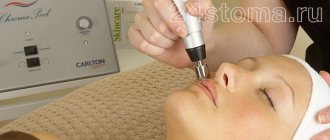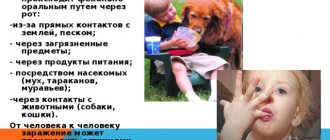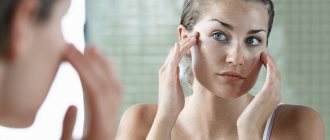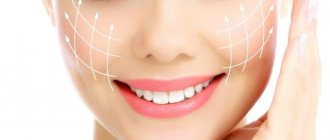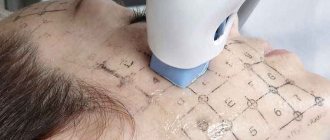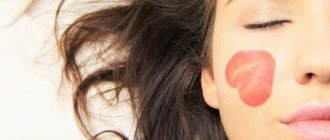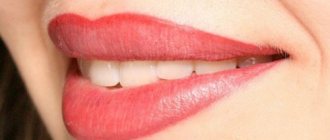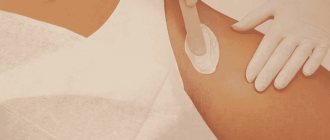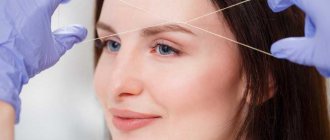Laser treatment methods
In laser scar therapy, there are several techniques that help get rid of scar tissue:
- Peeling with laser. The essence of the manipulation is the layer-by-layer evaporation of the scar, as a result of which it is polished and the pathological area of the skin is leveled. Suitable for correcting any cosmetic defects and is versatile;
- Laser treatment of scar tissue is based on the production of collagen, which leads to rapid renewal of skin cells at a deep level. The skin becomes smooth, dense, firm and elastic;
- Photothermolysis involves the removal of the top layer of epithelial tissue, as a result of which restoration processes at the cellular level are accelerated. Thanks to collagen synthesis, a tightening effect is obtained.
For your information, laser treatment of scars in most cases complements laser peeling, that is, the procedures are applied sequentially in combination.
To remove normotrophic scars, you will need to perform 2-3 medical procedures. They are usually carried out at intervals of one month. To get rid of a hypertrophied scar, you will need up to 8 sessions with the same break.
Laser resurfacing
Photo: scar on the face after an injury
Before you begin treatment with surgical or laser methods, you need to understand that it is almost impossible to completely remove a large old scar. However, it can be made much less noticeable in color and texture.
With the help of laser technology, scars and scars can be made up to 90% less noticeable.
Why can't they be completely removed? This is due to the mechanism of scar formation: during wound healing, elastic skin tissue is replaced by dense fibrous tissue.
If an excessive amount of fibrous tissue is formed during healing, the scar will protrude above the surface of the skin, and if there is not enough connective tissue formed, it will be below the surface of the skin.
Photo: laser facial peeling
Classic resurfacing is carried out with an erbium laser operating in the mid-infrared range. A special feature of this laser is that the energy of its beam is completely absorbed by the water contained in the tissues, so they are “evaporated” with the highest precision in very thin layers several microns thick.
Thanks to the precision of tissue evaporation, it is possible to protect the skin from damage to its sensitive layer. When intracellular moisture evaporates, a layer of dried cells is formed, which is subsequently easily removed.
The laser beam not only removes a layer of dead epidermal cells, but also stimulates skin regeneration.
Photo: laser resurfacing of scars
Laser scar removal using fractional resurfacing is based on activating skin renewal. Using a laser beam, the thinnest channels are left on the damaged skin, while neighboring areas are not affected.
Skin regeneration processes are carried out mainly through unaffected areas. By activating the formation of elastin and collagen, the structure of the scar or scar tissue becomes more elastic and looks similar to the surrounding skin.
It should be noted that the procedure has some contraindications:
- tanned skin;
- exacerbation of skin diseases;
- blood diseases;
- oncological diseases;
- diabetes in the stage of decompensation;
- pregnancy.
Video: Skin rejuvenation
The rehabilitation period after the procedure lasts 5-7 days, and its duration depends on the size and depth of the scar, as well as on the characteristics of the skin. For 3 days after resurfacing, the treated skin should not be wiped with products containing alcohol, or go to the sauna. For a month, it is necessary to protect it from exposure to sunlight using sunscreens with a high protective factor.
Contraindications to laser techniques
Instructions for the use of Timalin injections and analogues in tablets
Unfortunately, not all people can remove scars. Despite the high degree of effectiveness, safety and harmlessness of the procedure, it has certain contraindications that prohibit laser removal.
Medical contraindications to laser treatment:
- Oncological diseases; tendency to develop tumors, even if they are benign.
- An uncompensated form of diabetes mellitus, which is complicated by impaired peripheral circulation and slow recovery of damage.
- Blood clotting disorder.
- Dermatological pathologies that are in the acute stage.
- High sensitivity of the skin, organic intolerance to laser.
- Pregnancy, lactation period.
- Children's age up to 12 years.
Important: laser manipulations are carried out only on untanned skin, otherwise there is a high probability of severe burns.
Contraindications
Contraindications are mainly related to the individual characteristics of the body or the condition of the skin area proposed for laser resurfacing.
The procedure is definitely contraindicated for the following diseases and conditions:
- psoriasis;
- cystic acne;
- dermatitis;
- pregnancy;
- inflammatory processes;
- poor blood clotting;
- diabetes in the stage of decompensation;
- oncology;
- taking retinoids.
- Everything you need to know before deciding whether you need contouring of the nasolabial folds is in our article.
- About pigment spots on the face and the reasons for their appearance are described in detail here.
- Is chemical peeling of the face possible at home, as well as the details of the procedure in the author’s article //quclub.ru/uhod-za-kojei/litso/himicheskiy-piling-litsa-doma.html
How is scar removal done?
Laser removal is performed on an outpatient basis under local anesthesia. The duration of the manipulation itself varies from 5 minutes to one hour, depending on the affected area of skin.
The laser beam heats the hypertrophied tissue through short pulses, the cells inside quickly evaporate, as a result of which the scar becomes smaller. The strength and penetration depth of the beam is controlled by a computer program, which allows you to set the intensity of the impact with an accuracy of one micron.
What does Ichthyol ointment help with and instructions for use
To prevent overheating of the skin, a specific cooling system is used. This increases safety while reducing patient discomfort.
The advantages of the method include:
- No harm to healthy tissue;
- Impact accuracy;
- A small list of contraindications;
- Bloodless intervention;
- Visible result after the first time;
- Lack of rehabilitation period;
- Elimination of serious and major defects.
Immediately after the first session, the treatment area is washed and gently soaked with a paper towel. Then an antibacterial gel or cream is applied, and a light protective bandage is applied.
Carrying out the procedure
The question often arises: how to get rid of scars? Laser treatments immediately come to mind. It is the only one of its kind - it significantly reduces the depth of scars, and after a few sessions completely eliminates them.
A scar is several layers of connective tissue that appear as a result of mechanical or other damage to the skin. After the skin has lost its integrity, it is filled with tissue, which in its structure and color differs from the rest of the body, and therefore stands out strongly against them.
During laser resurfacing, the top layer of the dermis is removed and the tissue that has already healed is destroyed. This stimulates skin cells to divide and the synthesis of collagen and elastin is enhanced in the treated area, which contribute to the formation of new healthy skin. The scar becomes smaller in size, it is not so noticeable on the general layer. After the repeated procedure, not a trace remains of it.
Types of devices
They are produced by American and European manufacturers. Today, two types of devices are used to remove scars:
- erbium
- carbonic
The latter is used for deep penetration into connective tissue; it is capable of exerting a therapeutic effect on the treated area of the skin. The scar removal process is controlled by precise sensors; all stages are included in special programs developed by the device manufacturer. Such automation eliminates the risk of defects and does not depend on the human factor.
Video of laser resurfacing of scars:
The erbium apparatus, unlike carbon dioxide, acts on the surface of the skin without going deep into its layers. Its laser beam, passing deeper, loses its ability to affect tissue when it comes into contact with the liquid in it, so it can only work at a depth of several microns. It eliminates the upper layers of scars; when it reaches the skin with nerve endings, its effect ends. But even this is enough to reduce scars and trigger the synthesis of collagen, which regenerates the skin.
This stimulates the supply of oxygen to the tissue in large quantities, which promotes:
- tightening the skin, restoring its firmness and elasticity;
- fibrous tissue at the site of the scar is filled with new tissue;
- Pigmentation lightens, and some of its manifestations disappear completely.
This type of laser resurfacing can be used to treat particularly sensitive skin, even on the face. It is used for delicate areas such as the area around the mouth and eyes.
Its beam acts on the dermis gently and carefully thanks to the cooling system built into the laser device. It helps to avoid mistakes and complications, shortens the rehabilitation period after the procedure
The impact of the laser and the determination of the size of the treated areas are calculated by a cosmetologist and adjusted by a computer program.
Video of laser resurfacing of a scar on the face:
Procedure for carrying out the procedure
Getting rid of the scar occurs within two hours, during which time the patient’s preparation is included. The process takes place in a special operating room that meets medical standards.
Getting rid of a scar is carried out in several stages:
- Preparatory. The treated area is cleaned with a special gel, and then a soothing lotion is applied to it.
- Anesthetic. Local anesthesia is used on the areas exposed to laser irradiation. This involves applying a cream consisting of lidocaine and prilocaine. Before using it, the doctor must find out whether the patient is allergic to these substances. After the procedure, the anesthetic cream is removed with a special product. But its effect lasts for another hour.
- The grinding process lasts half an hour; to relieve tension, use a special ointment or make lotions. Then a moisturizer is applied to the treated area.
- Medical examination. After completing the procedure, the cosmetologist talks about further skin care.
The photo shows laser scar resurfacing “before and after”:
It is necessary to apply special balms and avoid using peelings and scrubs.
Within a week after the procedure, the skin becomes elastic, the scar is reduced, and existing wrinkles disappear along with it. At the same time, the oval of the face is corrected and age spots disappear. All skin becomes toned. With each new session, the effect of the procedure intensifies.
Reviews about scar removal
The result obtained is always assessed subjectively by the patient, and largely depends on the initial condition of the skin. Therefore, when studying numerous reviews about scar removal, this information should be taken into account.
Review from Marina, 25 years old. I decided to undergo this procedure. I won’t tell you the details so as not to scare anyone. But it was painful, uncomfortable, and after that it looked completely terrifying. Therefore, I recommend everyone to take time off from work to recover. I am satisfied with the effect, the scars are almost invisible if you look closely.
Review from Katya, 38 years old, I noticed improvements after my first visit to the doctor. Yes, it hurt, but not as much as everyone says. My full course is 4 sessions. The skin looks good, the scars are not visible, I am very pleased.
Review from Victoria, 19 years old. I had two childhood scars polished off. The result, alas, was not pleasing. Because indentations appeared from the grinding itself next to the scars. Then I had to resort to cryodestruction and do glycolic peeling.
As a result: everything is individual, including the effect of the laser procedure. The result depends on the condition of the skin, the degree of damage and other factors. Therefore, everyone chooses their own method.
